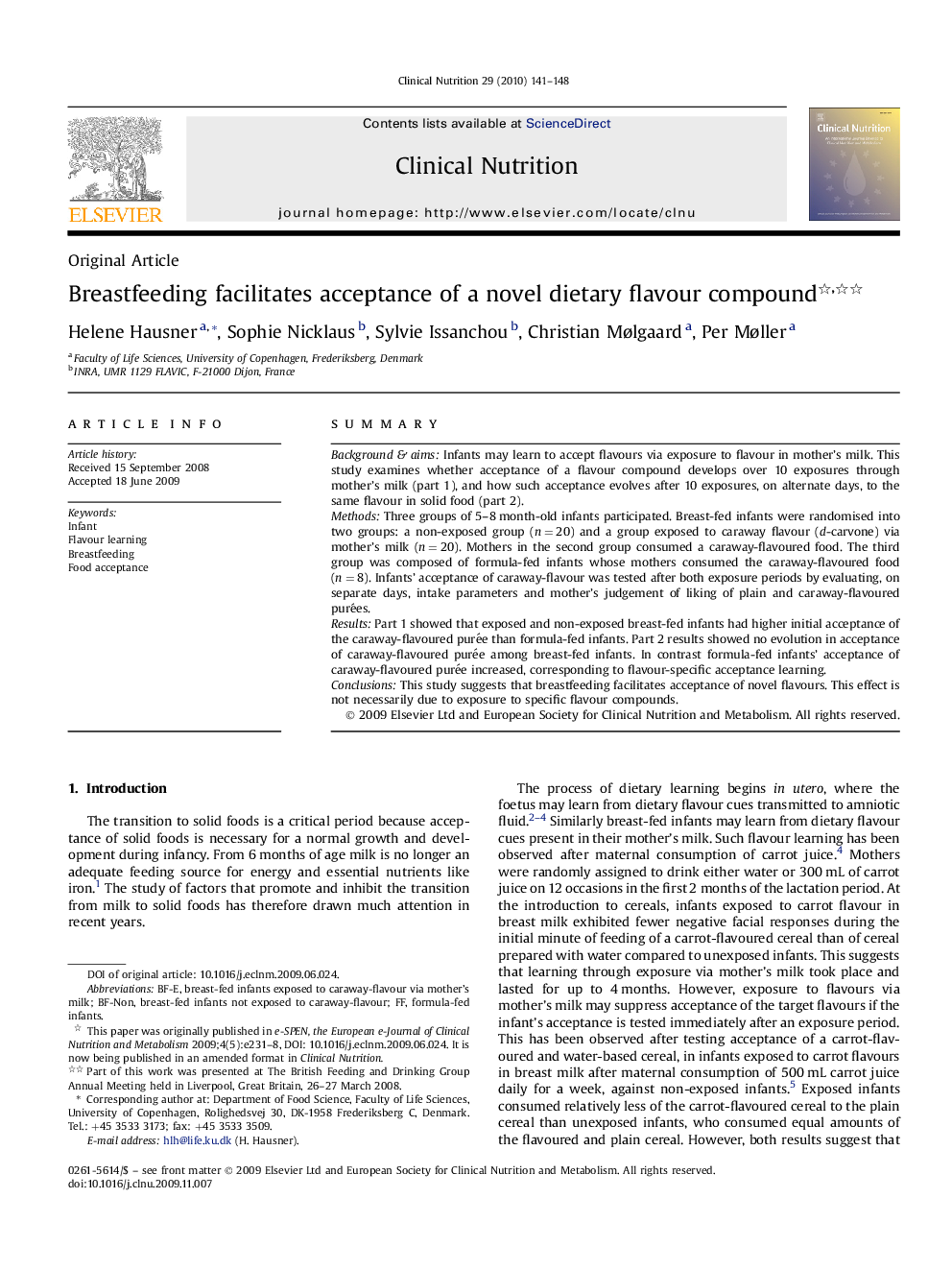| Article ID | Journal | Published Year | Pages | File Type |
|---|---|---|---|---|
| 2687294 | Clinical Nutrition | 2010 | 8 Pages |
SummaryBackground & aimsInfants may learn to accept flavours via exposure to flavour in mother's milk. This study examines whether acceptance of a flavour compound develops over 10 exposures through mother's milk (part 1), and how such acceptance evolves after 10 exposures, on alternate days, to the same flavour in solid food (part 2).MethodsThree groups of 5–8 month-old infants participated. Breast-fed infants were randomised into two groups: a non-exposed group (n = 20) and a group exposed to caraway flavour (d-carvone) via mother's milk (n = 20). Mothers in the second group consumed a caraway-flavoured food. The third group was composed of formula-fed infants whose mothers consumed the caraway-flavoured food (n = 8). Infants’ acceptance of caraway-flavour was tested after both exposure periods by evaluating, on separate days, intake parameters and mother's judgement of liking of plain and caraway-flavoured purées.ResultsPart 1 showed that exposed and non-exposed breast-fed infants had higher initial acceptance of the caraway-flavoured purée than formula-fed infants. Part 2 results showed no evolution in acceptance of caraway-flavoured purée among breast-fed infants. In contrast formula-fed infants’ acceptance of caraway-flavoured purée increased, corresponding to flavour-specific acceptance learning.ConclusionsThis study suggests that breastfeeding facilitates acceptance of novel flavours. This effect is not necessarily due to exposure to specific flavour compounds.
